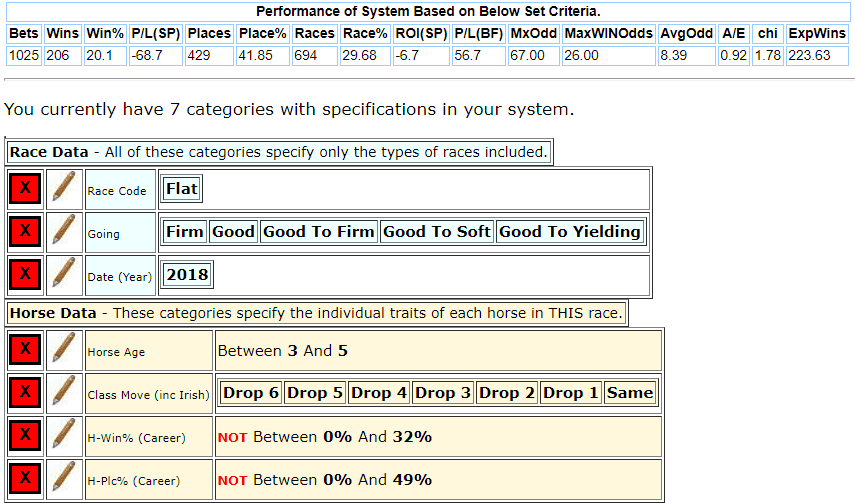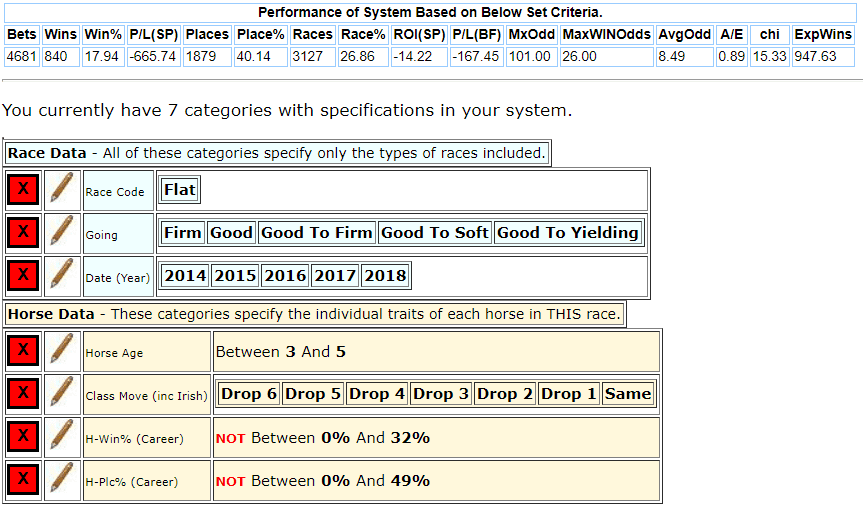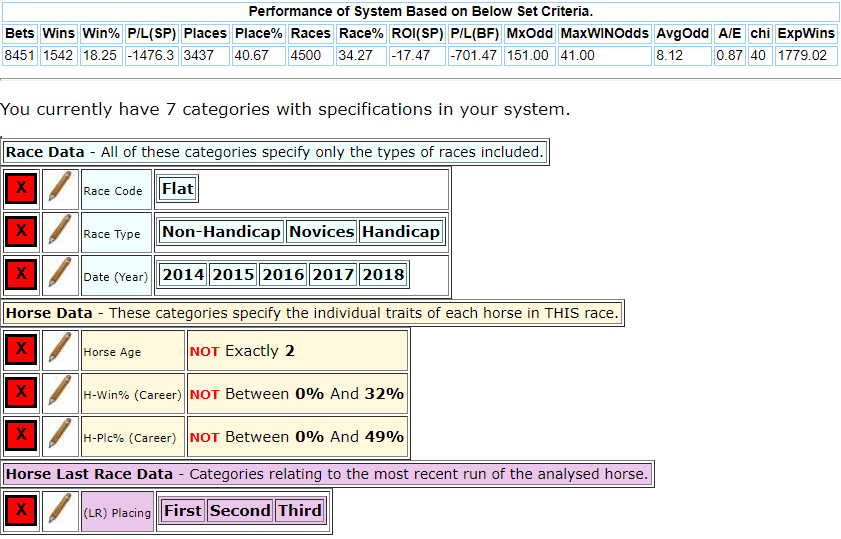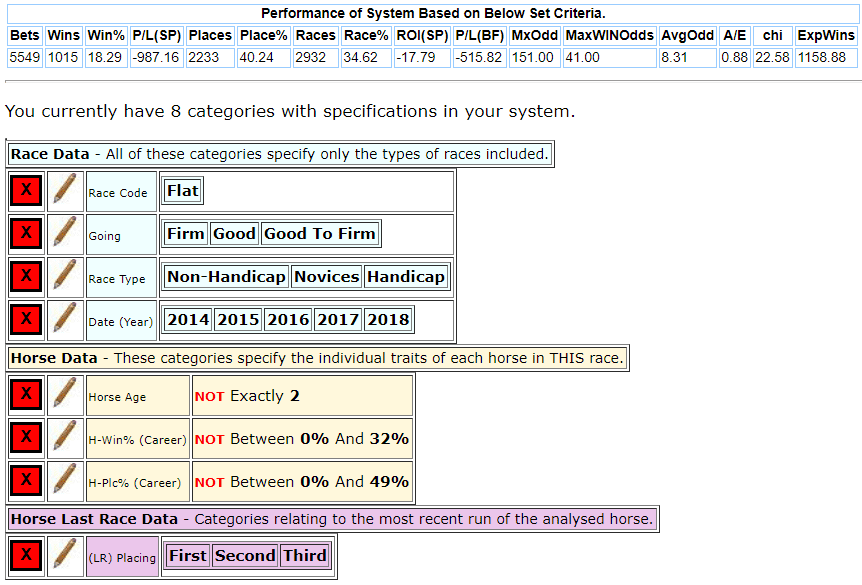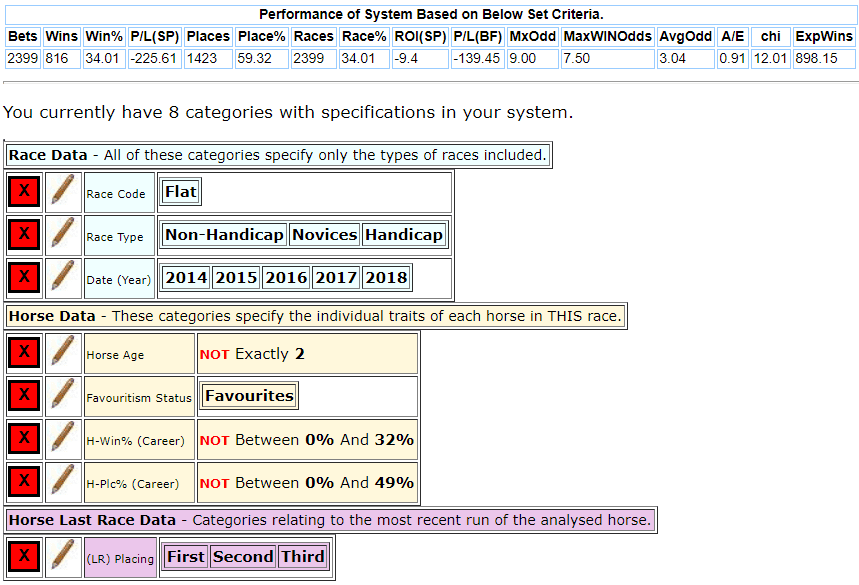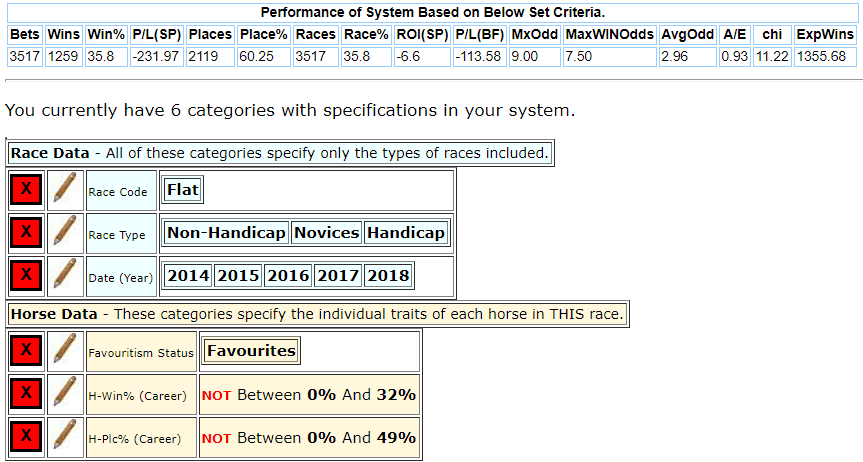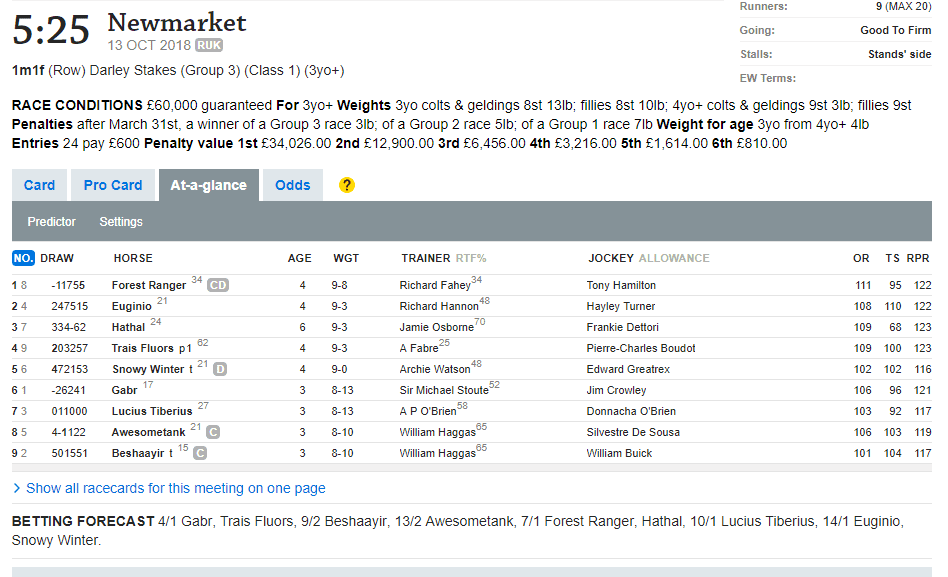Most Profitable Horse Racing System
Updated for 2023
The Importance of a Horse's Consistency
This month’s article looks at the importance of a horse’s consistency when it comes to selecting winning bets. Is winning with consistent horses possible? Read on for my most profitable horse racing system for UK racing. (Below I will share the Dowst method with you which is a consistently profitable horse racing system)
Over the years we punters have the habit of looking at historic systems or methodologies and their past performances to see if there is any juice within them to help make our betting consistently profitable.
It might be trawling through the racing forums looking at the intricate workings of the like “Flying Dutchman” Van De Wheil or re-reading Peter Braddock’s “Braddock's Complete Guide to Horse Race Selection and Betting” or Nick Mordin’s “Betting For A Living” and “Winning Without Thinking”.
Besides those mentioned above. It’s fair to say the seminal works on betting on horses come from across the Atlantic and the US.
Favourite US Betting On Horses Books
Here are just a few of my personal favourites. Some you will have heard of some will be new to you:
- George Elsworth Smith more popularly “Pittsburgh Phil”
- Ray Taulbot — The Grandfather of pace handicapping
- Huey Mahl – The Godather of pace handicapping. He and Taulbot were major influencers on Howard Sartin.
- Howard Sartin – Handicappers in the US seem to either love or hate him. However, there is no doubt about his enduring influence on punters over the Atlantic.
- Andy Beyer – The man who designed what become known as the Beyer Speed Figure. Probably many of you will know about Beyer.
- Steve Davidowitz’s book “Betting Thoroughbreds” which many American punters regard a close as there is to a Bible on horse racing, with his work in track biases, key races and the value of identifying trainer patterns. Davidowitz also influenced Beyer and remains one of the most knowledgeable guys in the business.
- Robert Saunders Dowst. Consistent proven horse racing system.
This month’s article looks at the importance of a horse’s consistency when it comes to selecting winning bets. There are two sections.
The first looks at the work of American handicapper Robert Saunders Dowst and test’s whether his theories are still profitable and consistent today.
Proven Horse Racing System
The second section looks at how I use consistency, and a horse’s proven ability under today's race conditions to assess the horse's chance, in my selection process with two working examples.
Robert Saunders Dowst: Mr Consistency
I first came across Dowst and his writings about 2 years ago. After reading them I was surprised how his theories on handicapping a race were similar to mine although I had not directly read of his work.
Dowst first developed his theories in the 1930’s. Since then his works remain worldwide best-sellers. He’s not without his critic’s though. However, this isn’t the place to look in detail at those controversies. Safe to say his most vocal critics claim much of his work could be subject to back -fitting.
How relevant are Dowst’s theories in the world of 21st century horse race betting and can they inform my consistent horse racing system?
Now some of them can clearly be questioned as racing continues to evolve.
However, there is little doubt in mind that some of his general principles are as sound today as they were in 1936. Indeed, his most famous work “Win, Place, and Show” remains one of the most comprehensive books on all aspects of racing and in my opinion the best when it comes to the psychology of handicapping and betting.
Horses With Consistent Profiles – The Dowst Method?
The Dowst Method, his simple horse racing system, was the contention that horses with consistent profiles win more races than those with poor profiles.
Basically, it was all about how to separate the good horses from bad horses to find the best horse for today's race.
Here are the two main principles of his methodology:
- A horse must have won at least 33% of their career starts
- A horse must have placed in at least 50% of its starts, this was the starting point.
He also added in a number of key factors when it came to determining what defined a good horse from a bad one.
Here are a few of them:
- Don’t bet on slow or heavy tracks.
- Don’t bet on two-year-olds.
- No bets on horses aged six and over.
- No bets on horses with a history of unsoundness.
- No bet on a horse when it is definitely stepped up in class.
All fairly sound principles although the training of horses in the modern era mean that older horse can remain competitive and consistent.
Whilst the soundness of a horse would preclude Dowst backing horses returning from a long layoff. Well given modern training methods it’s the case that trainers can bring a horse back from an injury to win after a long absence from the racecourse.
Now Dowst’s initial book came out in 1936 to much fanfare and James Quinn writing in his book “The Best of Thoroughbred Handicapping says, “it rang up big profits that year and in the following year”.
However, as Quinn goes onto write, “the bottom fell out of the system when so many people bet the selections that the sheer weight of money took away the profitability”. (The US pool betting model meant prices were moved more than they perhaps would be with our Betfair SP in the UK)
So effectively Dowst’s consistent horses’ system became too popular and the betting public bet it out of existence, no more big priced winners for Dowst followers!
I wanted to test Dowst’s theories using www.horseracebase.com.
Most Profitable Horse Racing System
Using all the above rules, except the subjective history of unsoundness, which is impossible to quantify and is no longer an important factor and just looking at the 2018 flat season.
We get the following set of results:
Taking a further look back to 2014 and things look even worse.
There is no profit to be had adding those rules and on the face of it doesn’t look like you can build a successful system using his main exclusions.
Dowst Returns Down Under
Back in 2004 the Australian horse racing betting magazine “Practical Punting” looked at the Dowst method to see whether it still held any relevance by testing it on Australian Racing.
The author Philip Roy used the following exclusions:
- Do not bet on Maidens or 2yo races.
- Only runners with a win strike rate of 33.3 per cent or more are to be considered (must have 10 runs or more in career).
- A contender must have won or placed second or third at its most recent start.
- A contender must be a distance winner at the distance of today's race.
- No bet if a horse is carrying 58kg or more (take apprentice allowances into account (That's 9 stone 2 pounds). *
*Source PPM (December 2014)
Fourteen years on I find myself now testing some of their filters, and adapting it to British flat racing. Using the following filters:
Race Type: Not maiden
Ages: 3yo+
Last Time Out Placing: 1st, 2nd or 3rd
Horse Career Win %: 33+
Horse Career Place %: 50%+
Since 2014 those filters provided the following set of results on horseracebase:
An 18%-win strike rate, a loss of -17.47, and an A/E performing 13% below market expectations. All show it doesn’t work.
The Chi score of 40 also suggests that the results are not random and indeed it won’t get any better.
Now I left out one of Dowst’s key exclusions: Don’t bet the selections on slow or heavy tracks. So just looking at going good or quicker produced the following set of results:
So even if you avoid the slower going it doesn’t improve the figures at all.
Once again the Chi score is an indication that those results are unlikely to be improved upon.
Now looking at the favourites using the filters:
At last a positive stat. The win strike rate has increased to 34% and indeed 81% of all the winners were in the first three in the betting
If you took out the age filter and last time out placing the favourites produced the following results:
Taking out handicap races and just looking at non-handicaps produced the following:
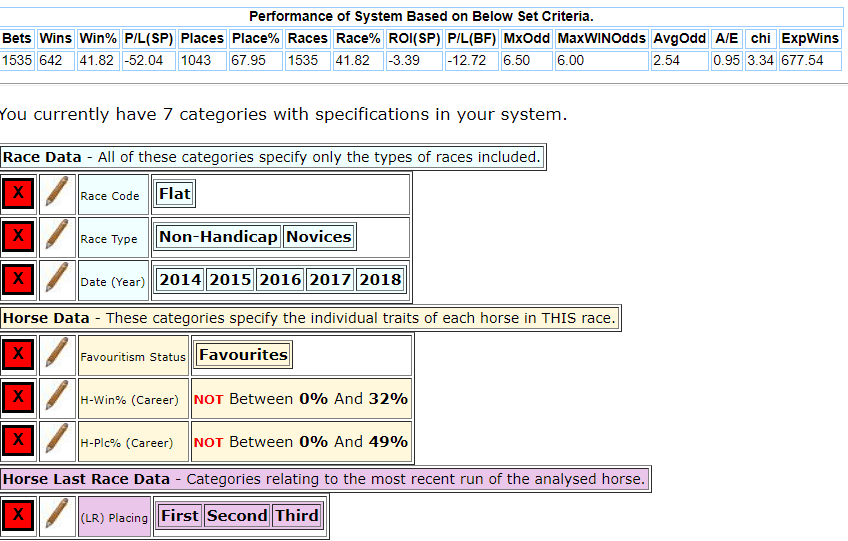
An improvement in performance clearly with a near 42%-win strike rate but you would still be losing money albeit at a more modest level.
Now given we're in the business to win money and be profitable so this is no good for us!
Updating the Dowst Method: Proven Horse Racing System
So, you can’t really build a system around the Dowst method, but the basic principle of backing consistent horses or horses that win their share of races remains a sound principle.
Without any regard to other factors.
When you see two horses of a similar class which do you prefer, the horse with a 33%-win strike rate or the one with a 9%-win strike rate?
How can you utilise the basic simplicity behind Dowst’s thoughts?
The Most Profitable UK Horse Racing System
Here’s my three-step process for this free horse racing system:
Look for the Right Races
Concentrate on the better class of race. Use this methodology mostly on the Group races, with an occasional big handicap selection added into the mix.
Look for Consistent Form – Adopting the Dowst Method.
Look for horses who have a 25% win+ career strike rate & 40%+ place strike rate, the higher the better in both cases. We want to be betting horses that have proven they are consistent and can win races.
Look for Proven Ability Under Race Conditions
We want a selection that has proven their suitability under the conditions of the race under consideration, using the following five variables: Going, Class, Course, Distance and Field Size.
At the same time, it also highlights those runners who are not likely to suited to the race conditions.
Examples:
The best way to show the process is by giving you a couple of working examples:
Let’s look at the Group 2 Challenge Stakes over 7f run at Newmarket.
Here is a screenshot of the Racing Post’s card for the race:
Starting off I note the record of the clear favourite in past runnings of this race and the last ten running’s of the race have produced:
So, it’s a good race for the favourite. In the next step I will look at the career records of the second favourite and third favourite in the forecast betting:
Limato -10 wins from 20 runs 50% 15 placed 75%.
D’bai – 5 wins from 23 runs 22% 13 placed 57% (includes runs at Meydan).
Mankib – 5 wins from 10 runs 50% 6 placed 60% (includes runs when trained in France).
So far so good. Now let’s see if Limato is suited to the conditions of the race:
Going: Good to Firm – 4 wins from 10 runs 40% 7 places 70%
Class: Group 2 – 2 wins from 4 runs 50% 3 places 75%
Course: Newmarket Rowley 1 win from 1 run 100% – 3 wins from 5 runs 60% 4 places 80%
Distance: 7f – 2 wins from 3 runs 67%
Field Size: 11 or less – 6 wins from 8 runs 75%
Add in that he’s 2 wins from 2 runs in October and you have the makings of a solid backable favourite suited by the conditions of the race at a generous 2/1 on the Racing Post betting forecast for the race.
He was actually available at 2/1 with a number of firms the evening before the race and was sent off realistic 7/4 at the off before winning by just over a length.
Now it’s not often that a selection leaps off the page like Limato did but there is plenty of such fish to be caught.
All going off at odds bigger than their chance suggests even at the front end of the betting.
Note: These races were analysed and published ahead of racing, so it wasn't a case of picking two winning examples. Limato won the second example did not, but a level stakes profit was made by the examples.
Now let’s look at another race from Newmarket’s Saturday Card, the Group 3 Darley Stakes over 1m 1f.
Looking at the record of the clear favourite since 2008:
Unlike the other example, this hasn’t been a great race for the favourite and they are performing below market expectations.
Turning to step two. In this case, I will look at the consistency of the front four in the betting:
Gabr – 2 wins from 9 runs 22% 4 places 44%
Trais Fluors – 4 wins from 11 runs 36% 7 places 64%
Beshaayir – 4 wins from 9 runs 44% 5 places 55%
Awesometank – 4 wins from 10 runs 40% 7 places 70%
Gabr and the French trained Trais Fluors are the Racing Post betting forecast’s joint favourites. Whilst Gabr dropped into Listed Class to win at Goodwood has scope for improvement being a 3-year-old.
Trais Fluor has arguably the better form with the 4-year-old having finished third in a Group 1 back in May.
William Haggas saddles Beshaayir and Awesometank.
The trainer’s record in the race is 1 win from 4 runners 3 placed, winning the race in 2016.
So, both his runners have to be high on the contenders' list.
Looking at the suitability of conditions for his pair of runners.
Beshaayir
Going: Good to Firm – 2 wins from 5 runs 40%
Class: 1 – 1 win from 3 runs 33% 2 places
Course: Newmarket Rowley: 1 win from 1 run 100%
Distance: 1m 1f – Yet run at the distance (2 wins from 3 runs 67% over a mile)
Field Size: 8 to 11 – 3 wins from 6 runs 50%
Awesome Tank
Class: 1 – 1 win from 3 runs 33% 2 places 67%
Course: Newmarket Rowley: 1 win from 2 runs 50%
Distance: 1m 1f – Yet run over the distance in the UK (3 wins from 5 runs 60% 4 places 80% over a mile) but was runner-up at Longchamp over the trip on her last start.
Field Size: 8 to 11 – 2 wins from 5 runs 40 3 places 60%
Due to the quick ground, there were three non-runners, including Trais Fluors and Beshaayir. That changed the complexion of the race but I would still be happy to take on Gabr at the prices with remaining Haggas runner.
Awesometank is a consistent filly, granted her last win came in Listed grade and she is stepping up in grade today but she’s in form and proven in the race conditions.
I am writing this prior to the race and Awesometank at 11/4 would be my selection. (Awesometank was a loser, with the jockey blaming the firm ground)
In summary, the importance that Dowst gave to consistency when it comes to finding winners, remains alive and well. Indeed, I think most punters don’t give it the importance it still merits.
Hopefully, you will have found my selection process of interest. It shows you can find plenty of winners looking at a horse who win more than their share of races, are proven under the key race conditions and are at the front of the betting. A method that the average punter can use.
If you would like to add my Consistent Horses selections to your portfolio you can join my Consistent Profits selections service – https://consistentprofits.co.uk/</a>
Until next time.
John Burke
Find out more about John Burke in this interview we conducted back in 2017 – John Burke Interview
This changes from year to year, what was once profitable becomes less profitable as the market adapts.
The job of the bookmaker is to make money and if a particular system becomes profitable the prices available about those selections will be squeezed and the value will disappear.
That is why we are constantly researching and finding new angles to bet.
Researching, testing and sharing free and profitable horse racing systems is what we do at On Course Profits, if you are not already a subscriber sign up for our free magazine and you will get free racing systems every month.
If you are looking for a system that uses just the previous winning positions form figures EG 3521/75 etc I don't think such a system would work anymore. Way back in the 80's there was a very good system by a guy called Clive Holt that was based on form figures but the market adjusted, technology moved on and it is no longer profitable
For such an approach to work today it would need other factors to narrow down selections.
The Fineform method mentioned above just looked for wins in the last two races and a CD or C & D by the name indicating that it had won over the course and distance.
Such a system is way to simple for today's sophisticated betting market.
On Course Profits magazine researches and tests Uk horse racing systems every month, you can subscribe for free.
Nick Mordin was a journalist who decided to see if his own methods could make enough to live as a pro gambler and he published a number of very good books back in the 90's, but has not been heard from since.
Ian Welch creates the Inform speed ratings which can be found at his informracing.com site



